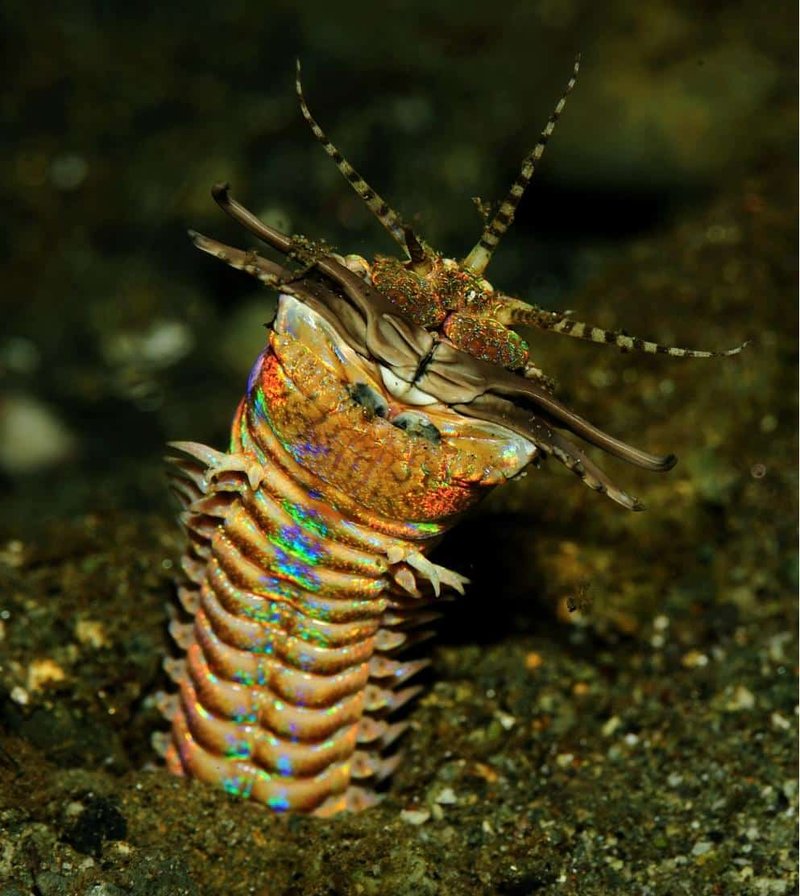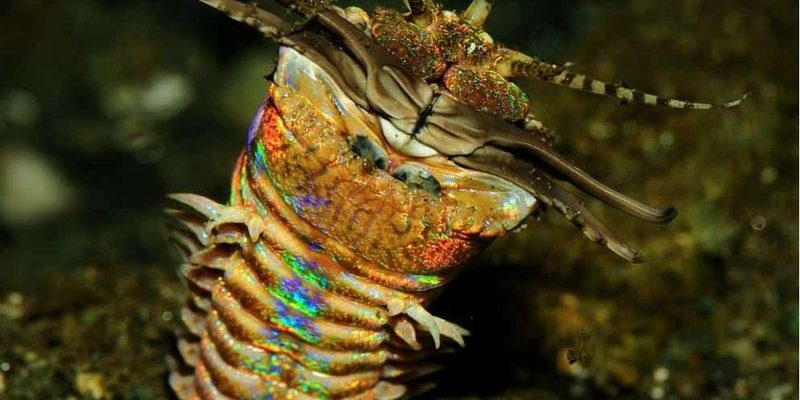
Now, picture this: you’re on a beach, and you spot a hole in the sand, the entrance to the Bobbit worm’s den. With its long, colorful body blending into the ocean floor, this worm can be both beautiful and terrifying. But don’t let its aesthetics fool you. The Bobbit worm is equipped with deadly jaws and can launch a lightning-fast attack on its unsuspecting prey. In this article, we’ll break down how its attack speed stacks up against other worms while highlighting key features that make this creature stand out.
What is a Bobbit Worm?
The Bobbit worm (Eunice aphroditois) is a marine polychaete worm that can grow up to 10 feet long. With its bright colors and segmented body, it’s hard to believe how dangerous it can be. These worms are typically found in warm, shallow waters, hiding in their burrows, waiting for the perfect moment to strike.
What makes Bobbit worms particularly interesting is their *unique hunting strategy*. Unlike many other worms that might slowly digest their food or siphon nutrients from detritus, Bobbit worms are *active predators*. They use their keen senses to detect vibrations in the water, signaling the presence of potential prey. When they sense movement, it’s like the starting gun at a race—their jaws snap open, and they can attack with incredible speed.
On average, Bobbit worms can strike their prey in just a fraction of a second. This rapid response is what sets them apart from many other worm species. But how does that speed compare to other types of ocean-dwelling worms? Let’s explore.
Comparing Attack Speeds: Bobbit Worm vs. Other Worms
When we talk about attack speed, we often think of creatures in terms of quickness and efficiency. The Bobbit worm is known for its attack speed, which can reach up to 1.5 meters per second. That’s about the length of an average small fish! In contrast, let’s look at how this compares to other common worms.
- Earthworm: These familiar garden dwellers have a very different method of survival. Earthworms are not predators; they primarily feed on organic matter in the soil, so they don’t have a need for speed. Their movement is much slower, typically measured in centimeters per minute.
- Fireworm: Fireworms, which are another type of marine polychaetes, can also exhibit quick movements but not quite at the level of the Bobbit worm. Their defensive mechanisms involve bristles that can sting, but they lack the lightning-fast ambush technique.
- Palolo Worm: The Palolo worm is famous for its reproductive events, where it releases segments filled with eggs into the water. While they can swim quickly during these events, their regular speed is much slower than that of the Bobbit worm.
It’s clear that the Bobbit worm not only outpaces most other worms but also showcases a unique predatory style that’s efficient and effective.
The Anatomy of Speed: How Bobbit Worms Strike
What exactly makes the Bobbit worm’s speed and agility so remarkable? It starts with their anatomy. The jaws of a Bobbit worm are powerful and equipped with sharp teeth, designed for snatching up prey with terrifying efficiency. When it’s time to attack, they can extend their jaws rapidly, almost like a spring-loaded trap.
Let’s break this down:
– Muscular Body: Bobbit worms have highly developed muscles that allow for quick movements. This muscle structure is what enables them to spring from their burrows and capture prey in the blink of an eye.
– Sensory Organs: These worms are equipped with sensory organs that detect changes in water currents and vibrations. This ability to sense their environment allows them to identify and pinpoint prey, increasing their chances of a successful strike.
– Camouflage: Their long, segmented bodies help them blend into the ocean floor, making it difficult for both prey and predators to spot them. This stealth approach adds to their effectiveness as hunters.
Understanding how these features work together gives us insight into why Bobbit worms are such efficient predators in their habitat.
The Importance of Speed in Survival
You might be wondering, why is speed so crucial for the Bobbit worm? For one, it directly affects their ability to hunt. Their fast attack speed enables them to catch prey quickly before it has a chance to escape. Given that they often share their habitat with other predators, being quick can mean the difference between a satisfying meal and going hungry.
In the underwater world, survival often hinges on the ability to adapt. Fast predators like the Bobbit worm can thrive in environments filled with competition. This speed doesn’t just help them catch food; it also helps them avoid becoming meals themselves. Larger fish and other marine animals are on the lookout for easy prey, and being able to strike quickly can be a defensive mechanism as much as it is an offensive one.
Additionally, their speed plays a role in their reproduction. During mating seasons, being quick to find a partner can increase their chances of passing on genes to the next generation.
In exploring the Bobbit worm’s attack speed compared to other worms, we discover a unique picture of life beneath the ocean waves. The Bobbit worm stands out not only for its speed but also for its adaptation and survival strategies. It’s a reminder that nature is filled with incredible creatures, each with its own set of tools for thriving in the wild.
Understanding these fascinating marine animals can lead to a greater appreciation for the diversity of life in our oceans. Whether you’re a budding marine biologist or just someone with a curious mind, the world of worms—especially the Bobbit worm—offers endless surprises. So, the next time you see a hole in the sand, remember there might be a Bobbit worm waiting inside, ready to showcase its remarkable speed and skills!

